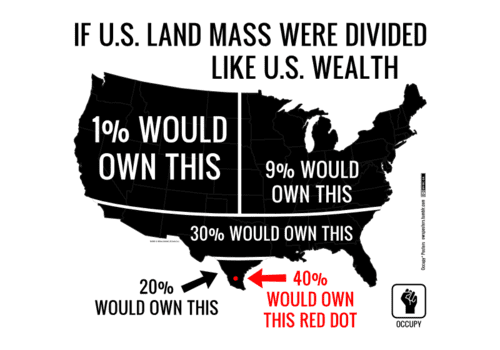
During the first wave of the coronavirus pandemic, the U.S. job market underwent unprecedented shocks. In April 2020, the unemployment rate reached 14.8%—the highest rate observed since data collection began in 1948 — soaring from just 3.5% in February 2020.
The worst affected were low-paying jobs — with median hourly earnings of $10.22 according to estimates using a paystub generator — which comprise 44% of the country’s workers. But could have been a lot worse were it not for unprecedented government intervention through stimulus and unemployment checks.
According to economists at the University of Illinois, Urbana-Champaign, the pandemic should have resulted in a dramatic increase in wage inequality had the federal government not stepped in with fiscal stimulus through the CARES Act and enhanced unemployment benefits. What’s more, unlike other recessions, those who retained their jobs did not experience pay cuts.
“Those who remained employed didn’t experience any atypical earnings changes,” said Eliza Forsythe, a professor of labor and employment relations and of economics at the University of Illinois. “The lowest-paid among us, however, really bore the brunt of it. They were much more likely to lose work during the pandemic.”
After sifting through data from the Current Population Survey, the primary source of U.S. labor force statistics, the researchers found that the aggregate real labor earnings decreased by more than $250 billion between March-July 2020 compared to the same period in the previous year.
“The decline in aggregate earnings was entirely driven by declines in employment, particularly among the lowest-paid workers,” Forsythe said.
But the $600 in additional weekly unemployment insurance provided by the federal government managed to prevent a disaster. This figure was not chosen by accident — it is meant to provide a 100% replacement rate for the median full-time earner when combined with the standard state unemployment insurance rate, which is typically 40%. However, the policy actually overshot its goal pushing the median replacement rate to 118%. In other words, unemployed people during the pandemic tended to earn more than they did when they were actually employed before the recession hit.
On top of that, the U.S. government has sent out three rounds of stimulus checks — for up to $1,200, $600, and $1,400 — over the past year in response to the coronavirus pandemic.
Critics have found that this extra cash was too much, adding extra strain to an already over-indebted federal government. However, the researchers note that the generous unemployment and stimulus packages served to propel consumer demand during the early months of the COVID-19 recession. Things could have been much worse.
“Those are the people who are likely to spend every dollar, so giving them that extra money very likely rescued the economy from a more severe recession,” Forsythe said. “It’s been an extremely successful policy from the perspective of increasing incomes at the bottom of the income scale. During a recession, we want people to spend money. So we need to get money in the hands of the people that are actually going to spend it, because that’s what’s going to keep us from tipping into an even worse recession and can help us get into the recovery. On the public policy side, we want to help people who have lost their jobs so they don’t also lose their houses or get evicted because they can’t make their rent. But we also want to stimulate aggregate demand in the economy. People who have lost their jobs face a big income shock, and by replacing the money they lost, we’re keeping the economic contraction from spiraling out of control.”
Another study published in PLOS ONE seems to confirm these findings, showing the stimulus program largely curbed the post-lockdown spending declines and stimulated spending following pandemic-related income loss by people making less than $35,977 per year.
The pandemic safety net has also led to an intriguing phenomenon in 2021, whereby U.S. employers are now struggling to fill ten million jobs. If at the beginning of the pandemic, many people were terrified by the surges in layoffs, now more Americans than ever are quitting their jobs — an exodus some call “The Great Resignation”.
“Historically, people are much more willing to quit their jobs when there are a lot of job openings. And what we’re seeing is a record level of job openings. Employers are looking for a lot of people to fill jobs and we clearly see in the data that expenditures by consumers, for a wide range of consumption products, are very, very high. People delayed a lot of consumption during the pandemic. So, there’s huge demand. We’re also seeing inflation take off a bit with shortages in these areas,” said Lawrence Katz, the Elisabeth Allison Professor of Economics at Harvard, is a labor economist who analyzes earnings inequality and the effect that education has on living standards.
“A large number of workers lost their jobs in the pandemic and some are hesitant to come back to the labor market. We also have disruptions to the supply of temporary and seasonal workers through increased restrictions on immigration and work visas. And when there are a lot of outside opportunities, people are much more willing to take a chance on leaving their current job.”






